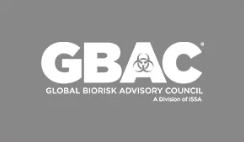A Day in The Life of a Forensic Service Personnel
Forensic Service Personnel make up a crucial feature of the Justice delivery system in the United States. Have you ever wondered how crimes are solved using DNA? Or how often are forensic services on duty? The forensic service personnel is made up of the bravest men and women who offer an immense contribution to solving crimes by using their knowledge and expertise in forensics. In this article, the profession is broken down further into work routines and the other areas that make up the Forensic Service Personnel.
Daily Routine - A Typical Workday
A forensic service technician’s average workday involves writing reports on findings received after a series of laboratory tests or the crime scene. On the crime scene, the personnel use advanced cameras in capturing detailed images of physical evidence. As the job is delicately intensive in the laboratory, a forensic technician has adequate experience and knowledge of how various chemicals and techniques are used to acquire findings. All necessary items are gathered from soil residues and pieces of wood to skin and hair, to draw definite conclusions or help with the investigation.
Weekly Routine
With a total of about forty hours, the forensic technician’s weekly tasks include (but are not limited to): ensuring samples of evidence retrieved are correctly stored. It is key to maintain the original properties of evidence collected to not compromise the outcome of investigations. The slightest human error could be detrimental. Every sample picked up must be stored separately to measure against cross-contamination, which could impair final results.
Monthly Routine
Within the month, morgue visitations, lab equipment operation, and preservation of evidence are the functions for the forensic technician. They also make efforts to compare findings with databases while seeking more information from other sources. In addition, reports from the Forensic Analysts are also reviewed.
It is crucial for forensic personnel to revisit crime scene locations to establish facts or collect unseen evidence. That explains why the  Forensic Services Frequency is the last to visit the crime scene to restore the location to the way it was before. Dust impressions either made by foot or shoe prints are carefully obtained for later processing. In several instances, the Forensic Technician develops that into a three-dimensional cast to enhance investigations.
Forensic Services Frequency is the last to visit the crime scene to restore the location to the way it was before. Dust impressions either made by foot or shoe prints are carefully obtained for later processing. In several instances, the Forensic Technician develops that into a three-dimensional cast to enhance investigations.
Forensic Statistics
There are four hundred Public Crime Labs in the USA, but the federal government manages only a handful. These are:
Drug Enforcement Agency (DEA)
U.S. Postal Inspection Service
Federal Bureau of Investigation (FBI)
Bureau of Alcohol, Tobacco, Firearms, and Explosives
Forensics dwell mainly on human probabilities and likelihoods to draw conclusions on a crime and how it may have been perpetrated. It relies on the models and techniques of scientific evidence to produce results. However, to prevent bias or draw incorrect conclusions, all findings are reported as “likelihoods” or what is known as Likelihood Ratios (LR).
How to Start a Career in Forensics
As with any other discipline, it is necessary to attain the requisite certificates to commence a career. To be a part of the forensic service personnel, you would need excellent mathematical, oral and written communication skills. There are many areas of forensic service you may want to explore, such as:
Crime Scene Investigator
Forensic Scientist
Criminalist
Forensic Science Technician
Crime Scene Analyst
This career path is an exciting one with the tendency to teach you more about human psychology. It is also an opportunity to discover the multi-faceted approach to crime and how to solve them.
Keep Your Home & Family Safe











